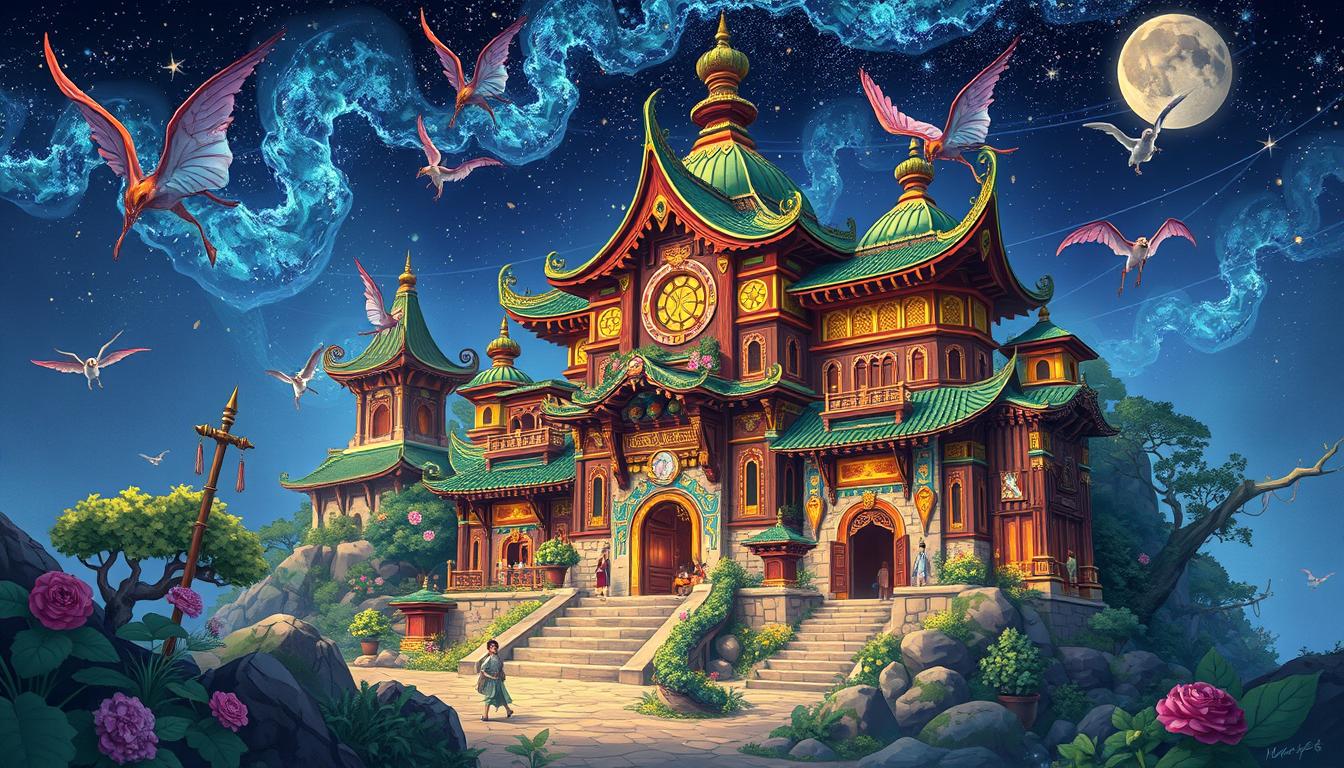
In the annals of organized crime, few figures loom as large as Griselda Blanco, the notorious “Godmother” of the Colombian drug trade. But what propelled this young woman to become one of the most powerful and feared narco-traffickers in history? How did a girl from humble beginnings transform into the ruthless “Queen of Cocaine”? Uncover the captivating story of Griselda Blanco’s meteoric rise to power and her unwavering grip on the illicit drug empire that shook the world.
Key Takeaways
- Griselda Blanco’s early life and family influences shaped her ambition and criminal mindset.
- Her strategic alliances and innovative smuggling tactics allowed her to dominate the Colombian drug trade.
- The “Cocaine Cowboys” era in Miami witnessed Blanco’s ruthless expansion and her rise to infamy as the “Black Widow”.
- Blanco’s defiance of law enforcement and her impact on future drug lords cemented her legacy as a notorious queenpin.
- The complex legacy of Griselda Blanco continues to fascinate and divide public opinion to this day.
Early Life and Background of Griselda Blanco
Griselda Blanco, known as the “Godmother” or “La Madrina” of the Colombian drug trade, had a tumultuous early life that shaped her into the notorious criminal figure she would become. Born in Cartagena, Colombia, in 1943, Blanco’s childhood was marked by poverty, violence, and a troubled family environment that would ultimately lead her down a dark path.
Birth and Family Influences
Griselda Blanco was born to a mother who worked as a prostitute and a father with a history of petty crime. From a young age, she was exposed to the harsh realities of the underworld, with her family’s involvement in various illegal activities. This upbringing, combined with the lack of stability and nurturing in her home, would have a profound impact on Blanco’s formative years and her future decisions.
Childhood in Colombia
- Grew up in a slum neighborhood in Cartagena, Colombia
- Experienced violence, crime, and poverty from a young age
- Dropped out of school at a young age to pursue a life of crime
- Became involved in petty theft, prostitution, and other illegal activities
Immigration to the United States
In the 1960s, the young Griselda Blanco made the decision to leave Colombia and seek a new life in the United States. Her arrival in the country marked the beginning of her transformation into one of the most notorious Colombian drug traffickers, known as the “Queen of Cocaine” or “La Madrina.”
“Griselda Blanco’s early life was a breeding ground for the ruthless criminal she would become, as she navigated the harsh realities of poverty, violence, and a family immersed in the underworld from a young age.”
The Formation of Griselda Blanco’s Criminal Empire
Griselda Blanco, the infamous queenpin of the Medellín cartel, began her journey in the world of cocaine smuggling in the 1970s. Her initial involvement in the drug trade was marked by a ruthless determination and an innovative approach that would soon establish her as a formidable force within the criminal underworld.
Initial Involvement in Drug Trafficking
Blanco’s foray into the cocaine smuggling business started with small-scale operations, where she leveraged her connections and strategic thinking to move drugs from Colombia to the United States. Her ability to navigate the complex web of drug trafficking networks and her willingness to resort to violence when necessary set her apart from her contemporaries.
Key Partnerships and Alliances
As Blanco’s operations expanded, she forged strategic alliances with other prominent figures in the Medellín cartel. These partnerships allowed her to access larger quantities of cocaine and establish efficient distribution channels throughout the United States. Her ruthless nature and ability to outmaneuver her rivals quickly earned her a reputation as a formidable player in the cocaine smuggling game.
Transitioning to Larger Operations
With her growing influence and resources, Blanco gradually transitioned from smaller-scale smuggling to large-scale operations that involved multi-ton shipments of cocaine. Her innovative smuggling techniques, such as the use of hidden compartments in vehicles and the strategic placement of drug mules, enabled her to evade law enforcement and maintain a steady flow of the illicit substance into the United States.
| Key Milestones in Griselda Blanco’s Criminal Empire | Timeframe |
|---|---|
| Initiation of small-scale drug trafficking operations | 1970s |
| Establishment of strategic alliances within the Medellín cartel | Mid to late 1970s |
| Transition to large-scale cocaine smuggling operations | Early 1980s |
“Griselda Blanco was a trailblazer in the world of cocaine smuggling, her ruthless tactics and innovative approach setting her apart as the infamous queenpin of the Medellín cartel.”
The Cocaine Cowboys Era
As the 1970s and 1980s dawned, Miami emerged as the epicenter of the miami drug wars and the cocaine cowboys era. This period was marked by the staggering growth of the drug trade, fueled by the insatiable demand for colombian drug trafficker. At the heart of this explosive industry stood Griselda Blanco, a ruthless and ambitious colombian drug trafficker who would cement her legacy as the “Queen of Cocaine.”
The Rise of Miami’s Drug Trade
Miami’s transformation into a hub for the cocaine cowboys was nothing short of remarkable. The city’s strategic location, coupled with its thriving tourism industry, provided the perfect conditions for the miami drug wars to flourish. Blanco, along with other colombian drug traffickers, recognized the immense potential and quickly established strongholds in the region.
Griselda’s Role in the Cocaine Wars
Griselda Blanco’s rise to power within the miami drug wars was marked by her ruthless and innovative tactics. She pioneered new smuggling techniques, such as the “chupa” method, which involved hiding cocaine in hollowed-out statues and other everyday items. Blanco’s relentless pursuit of market dominance brought her into fierce competition with other colombian drug traffickers, leading to a series of violent turf wars that became known as the cocaine cowboys era.
Competing Cartels and Power Struggles
The miami drug wars were not just about Griselda Blanco’s dominance; they also involved the fierce competition between various colombian drug trafficker cartels. These organizations vied for control over the lucrative drug trade, engaging in ruthless battles that often spilled into the streets of Miami. The city became a battleground, with innocent bystanders caught in the crossfire of the cocaine cowboys era.
“The cocaine cowboys era was a time of unprecedented violence and chaos in Miami, as various colombian drug trafficker cartels battled for dominance in the miami drug wars.”
Griselda Blanco’s Notorious Reputation
Griselda Blanco, known as the “black widow” and “la madrina” of the cocaine smuggling world, amassed a notorious reputation for her ruthless and innovative tactics in the drug trade. Her ability to evade law enforcement and establish a vast criminal empire centered around the trafficking of cocaine cemented her place as one of the most formidable figures in the history of organized crime.
Innovations in Smuggling Techniques
Blanco’s rise to power was fueled by her mastery of innovative smuggling techniques. She pioneered the use of hidden compartments in cars and the “mule” system, where couriers would carry drugs across borders concealed on their bodies. Blanco’s strategic thinking and attention to detail allowed her to stay one step ahead of law enforcement, making her a formidable foe in the ongoing war on cocaine smuggling.
The Infamous “Black Widow” Tag
Blanco’s ruthless nature and propensity for violence earned her the chilling nickname “the black widow.” This moniker was a reference to her alleged involvement in the murders of several of her husbands, as well as countless other rivals and enemies. Her willingness to eliminate anyone who stood in her way solidified her reputation as a cold and calculating criminal mastermind.
Her Impact on Drug Culture
Griselda Blanco’s legacy extends far beyond her own criminal activities. Her innovative smuggling tactics and the sheer scale of her cocaine empire inspired countless imitators and reshaped the drug trafficking landscape in the United States. Blanco’s influence can be seen in the tactics and structures of contemporary drug cartels, cementing her place as a pivotal figure in the history of organized crime.

“Griselda Blanco was a true pioneer in the world of drug trafficking. Her ability to stay one step ahead of the law and build a criminal empire on the back of her innovative smuggling techniques is both awe-inspiring and terrifying.”
Legal Challenges and Arrests
The notorious griselda blanco young, known as the “infamous queenpin” of the miami drug wars, faced numerous legal battles throughout her criminal career. Her rise to power in the drug trafficking world was met with intense scrutiny from law enforcement agencies determined to bring her to justice.
First Arrest and Conviction
Blanco’s first major encounter with the law came in 1974 when she was arrested in New York City on charges of drug trafficking. Despite her efforts to evade capture, she was convicted and sentenced to several years in prison. However, this setback did little to deter her ambitions, as she continued to expand her criminal network upon her release.
Escaping Law Enforcement Tactics
- Blanco was known for her innovative smuggling techniques, which often allowed her to stay one step ahead of law enforcement.
- She utilized a complex web of aliases, front companies, and sophisticated transportation methods to move vast quantities of cocaine into the United States.
- Her ability to adapt and evade capture frustrated the authorities, who struggled to keep up with her ever-evolving tactics.
Key Legal Battles in the 1980s
The pinnacle of Blanco’s legal challenges came during the 1980s, as she faced a series of high-profile trials and investigations. She was indicted on racketeering charges and accused of orchestrating numerous murders, including the assassination of a drug enforcement agent. Despite the mounting evidence against her, Blanco managed to avoid conviction on several occasions through a combination of legal maneuvering and witness intimidation.
| Year | Legal Incident | Outcome |
|---|---|---|
| 1974 | First arrest and conviction in New York City | Sentenced to several years in prison |
| 1985 | Indicted on racketeering charges | Charges eventually dismissed due to lack of evidence |
| 1988 | Accused of orchestrating the assassination of a DEA agent | Acquitted due to insufficient evidence |
Blanco’s ability to evade law enforcement and navigate the legal system with remarkable skill cemented her reputation as a formidable and elusive figure in the world of organized crime.
Family Dynamics and Relationships
Griselda Blanco, the notorious black widow and colombian drug trafficker, was known for her ruthless nature in the criminal underworld. However, her personal life and relationships were equally complex and intriguing. Blanco’s marriage to Carlos Blanco, the impact of her lifestyle on her children, and her role in mentoring future prominent figures in the drug trade provide a unique insight into the multifaceted life of this infamous la madrina.
Marriage to Carlos Blanco
Griselda Blanco’s marriage to Carlos Blanco was a partnership that spanned decades and played a crucial role in the expansion of her criminal empire. The two worked closely together, with Carlos serving as a trusted confidant and enforcer in Blanco’s smuggling operations. Their union exemplified the intertwining of love and violence that permeated the black widow‘s world.
Impact on Children
Blanco’s children were inevitably caught in the crosshairs of her criminal activities. Raised in the shadow of their mother’s infamy, they experienced the consequences of her actions firsthand. Some followed in her footsteps, while others sought to distance themselves from the family’s notorious legacy, highlighting the complex and often tragic impact of Griselda Blanco’s lifestyle on her own flesh and blood.
Mentorship of Future Drug Lords
In addition to her direct family, Griselda Blanco’s influence extended to the next generation of drug lords. As a seasoned colombian drug trafficker, she imparted her knowledge and expertise to emerging figures in the industry, shaping the tactics and strategies that would define the drug trade for years to come. Her mentorship of these aspiring criminals cemented her legacy as a formidable and influential figure in the underworld.
| Relationship | Key Aspects |
|---|---|
| Marriage to Carlos Blanco | Decades-long partnership, Carlos as trusted enforcer, intertwining of love and violence |
| Impact on Children | Raised in the shadow of infamy, some followed in her footsteps, others sought to distance themselves |
| Mentorship of Future Drug Lords | Imparting her knowledge and expertise, shaping the tactics and strategies of the next generation |
“Griselda Blanco’s personal life was as complex and captivating as her criminal activities. Her relationships, both with her family and her mentees, shed light on the multifaceted nature of this notorious la madrina.”
The Aftermath of Blanco’s Activity
As the miami drug wars and the reign of the infamous cocaine cowboys came to a close, the aftermath of Griselda Blanco’s criminal empire left a profound impact on the landscape of drug trafficking and the community of Miami.
Changes in the Drug Trafficking Landscape
Blanco’s innovative smuggling techniques and her ruthless control over the medellin cartel‘s operations in Miami had set a new standard for drug trafficking organizations. However, her eventual downfall and the dismantling of her criminal enterprise led to a significant shift in the dynamics of the drug trade.
- Emergence of new players: The power vacuum left by Blanco’s departure paved the way for other cartel leaders and independent drug traffickers to step in and establish their own operations in Miami.
- Diversification of smuggling methods: In response to heightened law enforcement efforts, drug cartels adapted their smuggling techniques, exploring new routes and methods to evade detection.
- Increased competition and violence: The influx of new players in the miami drug wars led to intense competition and escalating turf wars, resulting in a surge of drug-related violence and crime.
The Effect on Miami’s Community
Griselda Blanco’s criminal activities had a profound impact on the social fabric of Miami, leaving a lasting legacy that continues to be felt today.
- Disruption of neighborhood stability: The presence of the cocaine cowboys and the associated violence and criminal activities destabilized many communities, eroding public trust and quality of life.
- Increased demand for law enforcement: The escalating drug-related crime led to a heightened need for law enforcement resources, diverting attention and funding from other community priorities.
- Stigma and social consequences: The notoriety of the miami drug wars and the medellin cartel‘s influence in the city created a lasting stigma, making it challenging for Miami to shed its reputation as a hub for organized crime.
Lasting Influence on Future Cartels
Griselda Blanco’s legacy as the “Black Widow” of the cocaine cowboys era has continued to reverberate, influencing the tactics and strategies of subsequent drug trafficking organizations.
| Influence | Impact |
|---|---|
| Smuggling Innovations | Blanco’s pioneering use of couriers, hidden compartments, and sophisticated money laundering techniques inspired later cartels to develop even more sophisticated smuggling methods. |
| Ruthless Leadership | Blanco’s reputation for brutality and her willingness to eliminate rivals set a precedent for the merciless leadership style adopted by some later cartel leaders. |
| Female Empowerment | Blanco’s rise to power as a woman in a male-dominated criminal underworld paved the way for other women to assume influential roles in drug trafficking organizations. |
The aftermath of Griselda Blanco’s criminal empire has left an indelible mark on the history of the miami drug wars and the cocaine cowboys era, shaping the future of drug trafficking and the social landscape of Miami.
Media Portrayal and Public Perception
The captivating life story of Griselda Blanco, the infamous queenpin of the Cocaine Cowboys era, has captured the public’s imagination for decades. Blanco’s rise and fall as a powerful figure in the griselda blanco young drug trade has been the subject of numerous documentaries and biopics, each offering a unique perspective on her notorious legacy.
Documentaries and Biopics
One of the most well-known depictions of Blanco’s life is the 2006 documentary “Cocaine Cowboys,” which delved into the ruthless world of cocaine cowboys in Miami during the 1970s and 80s. The film featured interviews with former drug traffickers and law enforcement officials, providing a chilling account of Blanco’s criminal operations.
In addition to documentaries, Blanco’s story has also been dramatized in feature films, such as the 2018 biopic “Cocaine Godmother,” starring Catherine Zeta-Jones. These dramatized portrayals have often taken creative liberties to heighten the drama and intrigue surrounding Blanco’s life, blurring the line between fact and fiction.
Public Fascination with Her Life
Griselda Blanco’s life has captivated the public’s imagination, with her story serving as a cautionary tale of the consequences of unchecked ambition and the corrosive power of the drug trade. Her ruthless tactics, lavish lifestyle, and the sheer scale of her criminal empire have all contributed to her notoriety, making her a larger-than-life figure in the public consciousness.
Criticism vs. Admiration
Blanco’s legacy has been the subject of much debate, with some lauding her as a trailblazing woman who defied traditional gender roles in the male-dominated world of organized crime, while others condemn her as a cold-blooded killer responsible for countless deaths. This polarized public perception reflects the complex and multifaceted nature of Blanco’s life, challenging simplistic interpretations of her story.

As the infamous queenpin of the cocaine cowboys era, Griselda Blanco’s life has left an indelible mark on popular culture, serving as a cautionary tale and a testament to the power and danger of the illicit drug trade. Her story continues to captivate and divide the public, underscoring the enduring fascination with this griselda blanco young and complex figure in the annals of organized crime.
Griselda Blanco’s Legacy
The life story of la madrina, the notorious black widow and Colombian drug trafficker, has left an indelible mark on the history of organized crime. As the curtain falls on this complex figure, her legacy continues to reverberate, shaping the tactics, perceptions, and cultural representations of the criminal underworld she once dominated.
Influence on Drug Trade Tactics
Griselda Blanco’s innovative approach to drug smuggling and trafficking revolutionized the industry. Her mastery of disguises, her use of women as mules, and her ruthless efficiency in moving massive quantities of cocaine cemented her reputation as a trailblazer. Subsequent generations of drug traffickers would study her methods, adopting and refining her strategies to stay one step ahead of law enforcement.
Impact on Women in Organized Crime
Blanco’s rise to power in a male-dominated field challenged traditional gender roles and paved the way for women to assert their influence in the world of organized crime. Her fearlessness and calculated decision-making earned her the respect and fear of her peers, breaking down barriers and inspiring a new generation of female criminal masterminds to follow in her footsteps.
Cultural References and Memorials
The larger-than-life persona of Griselda Blanco has captivated the public imagination, leading to numerous cultural references and memorials that immortalize her legacy. From documentaries and biopics to urban legends and folk songs, her story has become woven into the fabric of popular culture, serving as a cautionary tale and a testament to the power and resilience of a colombian drug trafficker who defied the odds.
| Cultural Representation | Description |
|---|---|
| “Cocaine Cowboys” | A critically acclaimed documentary that delves into the rise of Miami’s drug trade and Blanco’s integral role in it. |
| “The Godmother” | A 2018 film that dramatizes Blanco’s life and criminal exploits, starring Catherine Zeta-Jones in the lead role. |
| Street Art Murals | Vibrant murals depicting Blanco’s likeness have emerged in various cities, serving as a testament to her enduring notoriety. |
Griselda Blanco’s legacy as la madrina, the black widow and a Colombian drug trafficker, is a complex and multifaceted one. Her influence on the tactics and dynamics of the drug trade, her impact on the role of women in organized crime, and her enduring presence in popular culture have all contributed to her legendary status, cementing her place in the annals of criminal history.
The Final Years of Griselda Blanco
After over a decade in prison, the infamous queenpin of the Colombian cocaine trade, Griselda Blanco, was released in 2004. Though she had spent most of her adult life incarcerated, the griselda blanco young criminal mastermind was not ready to leave the world of cocaine smuggling behind.
Life in Colombia After Prison
Upon her release, Blanco returned to her native Colombia, where she settled in Medellín, the heart of the country’s drug cartel operations. Despite her advanced age, she quickly reestablished connections within the criminal underworld and sought to regain her former position of power.
Return to the U.S. and Continued Risks
In 2007, Blanco briefly returned to the United States, only to face further legal troubles. Authorities had long sought to bring the notorious figure to justice, and she was soon apprehended and deported back to Colombia. Undeterred, Blanco continued her attempts to influence the cocaine smuggling trade from afar, posing an ongoing threat to law enforcement.
Mysterious Death and Its Implications
On September 3, 2012, Blanco’s turbulent life came to an end when she was gunned down in a motorcycle drive-by shooting in Medellín. The circumstances surrounding her mysterious death have been the subject of much speculation, with some suggesting that her past enemies or even her own criminal associates may have been responsible.
The demise of the griselda blanco young infamous queenpin marked the end of an era, leaving a lasting impact on the world of organized crime and the international cocaine smuggling trade that she had once dominated.
Conclusion: The Complex Figure of Griselda Blanco
Griselda Blanco, known as the “Black Widow” and “la madrina” (the Godmother), was a complex and multifaceted figure in the world of organized crime. As a Colombian drug trafficker, she left an indelible mark on the history of the cocaine trade, her legacy intertwined with the rise and fall of the infamous “Cocaine Cowboys” era in Miami.
A Reflection on Power and Gender
Blanco’s story is a testament to the remarkable power and influence a woman could wield in the male-dominated realm of the drug underworld. Her ability to navigate and thrive in such a ruthless environment challenges traditional notions of gender roles and power dynamics. Blanco’s success in building a criminal empire speaks to her cunning, ruthlessness, and sheer determination – qualities often associated with her male counterparts.
Lessons from Her Life Story
Examining Blanco’s life offers valuable lessons about the consequences of greed, the corrupting influence of power, and the cycle of violence that can permeate the criminal world. Her story serves as a cautionary tale, highlighting the personal and societal costs of such a life of crime. At the same time, her resilience and adaptability in the face of adversity underscore the complexities of the human experience.
The Unforgettable Legacy of a Queen
Griselda Blanco’s legacy remains a subject of fascination and debate. While her crimes were undoubtedly horrific, her impact on the world of organized crime is undeniable. She is a figure who continues to captivate the public imagination, with her story inspiring numerous documentaries, biopics, and cultural references. Blanco’s life serves as a stark reminder of the power and influence a single individual can wield, for better or for worse.
“Griselda Blanco was a woman who defied the traditional gender norms of her time, carving out a ruthless and formidable presence in the male-dominated world of drug trafficking.”
References and Further Reading
For readers interested in delving deeper into the captivating life and legacy of Griselda Blanco, often referred to as the “Cocaine Queen of Miami,” there are a wealth of recommended books, articles, documentaries, and online resources available. These materials offer insightful perspectives on Blanco’s rise to power, her impact on the cocaine trade, and her lasting influence on the criminal underworld.
Recommended Books and Articles
Among the acclaimed books that explore Griselda Blanco’s story are “Cocaine Cowgirl: The Story of a Cuban Drug Queen” by Nicholas Ramirez and “The Godmother: The True Story of La Madrina, the Cuban “Godmother” of Miami’s Cocaine Cowboys” by Blanco’s former lover, Michael Corleone. Scholarly articles, such as “The Female Cocaine Kingpin: Griselda Blanco and the Cocaine Wars in Miami” by Dr. Kellie Hogue, delve deeper into the gender dynamics and societal implications of Blanco’s rise to power.
Notable Documentaries and Films
The intriguing life of Griselda Blanco has also been the subject of several acclaimed documentaries and films. “Cocaine Cowboys,” directed by Billy Corben, and its sequel “Cocaine Cowboys II: Hustlin’ with the Godmother” provide in-depth examinations of the “Cocaine Cowboys” era in Miami and Blanco’s central role. The 2018 biopic “The Godmother,” starring Catherine Zeta-Jones, offers a fictionalized portrayal of Blanco’s journey from humble beginnings to the heights of the drug trade.
Online Resources for Additional Information
For readers seeking more information on Griselda Blanco and the “Cocaine Cowboys” era, a wealth of online resources are available, including news articles, interviews, and specialized websites. Platforms like the History Channel, Biography.com, and dedicated crime forums offer comprehensive coverage of Blanco’s life, crimes, and legacy, providing further insights into this complex and influential figure in the annals of organized crime.






